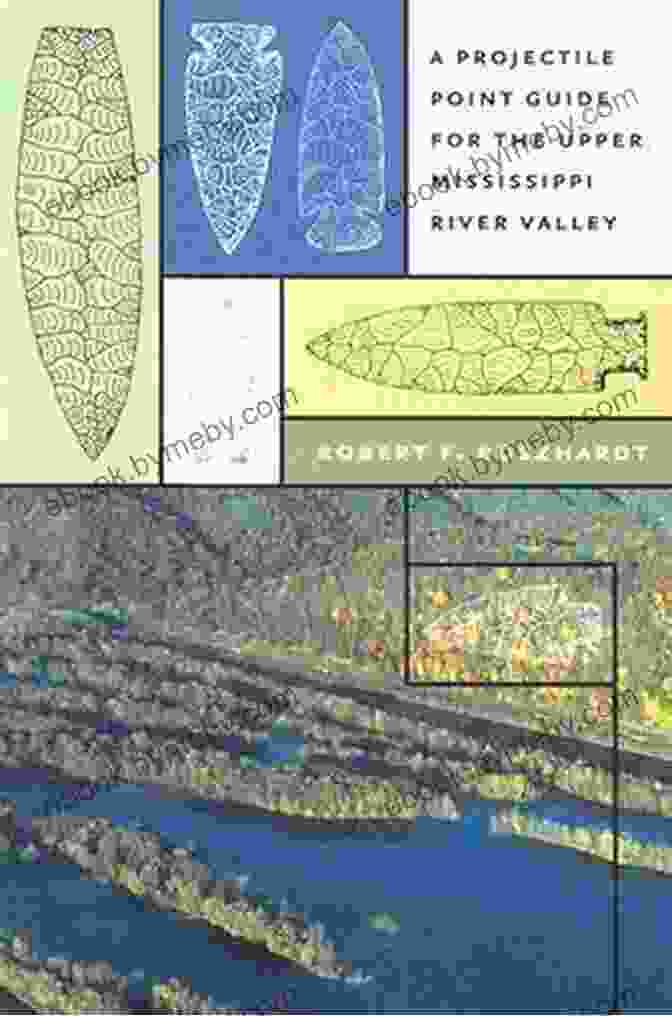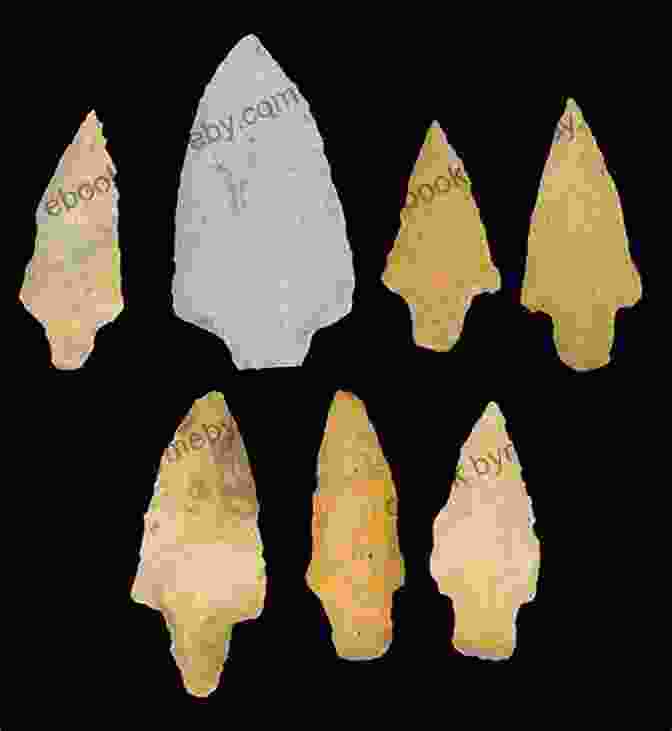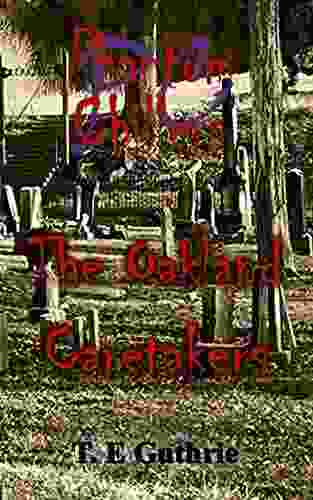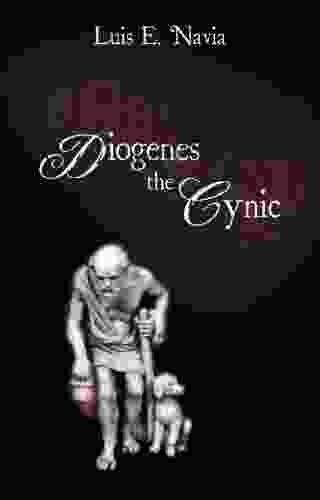A Comprehensive Guide to Projectile Points of the Upper Mississippi River Valley: Unraveling the Past Through Artifacts

Welcome to the world of projectile points, fascinating relics that offer a glimpse into the lives and technologies of our ancestors. This comprehensive guide, meticulously crafted by experts, delves deep into the rich archaeological tapestry of the Upper Mississippi River Valley, providing a definitive resource for collectors, archaeologists, and history enthusiasts.
Projectile points, also known as arrowheads or spear points, were essential tools for hunting and warfare in pre-industrial societies. Their intricate designs and diverse forms reflect the skill and artistry of ancient craftspeople. Through careful examination of these artifacts, we gain valuable insights into the cultural practices, technological advancements, and migratory patterns of the people who once inhabited this region.
4.7 out of 5
| Language | : | English |
| File size | : | 1214 KB |
| Text-to-Speech | : | Enabled |
| Word Wise | : | Enabled |
| Print length | : | 104 pages |

A Regional Overview
The Upper Mississippi River Valley, spanning from Minnesota to Illinois, is a region renowned for its rich archaeological heritage. Over thousands of years, this fertile landscape was home to a succession of Native American cultures, each leaving behind a distinct imprint on the region's archaeological record.
The projectile points found in this area reflect the cultural diversity and chronological depth of the region. From the early Paleo-Indian period to the Late Woodland period, different cultural groups produced unique projectile points that serve as markers of their respective eras.
Typology and Identification
Projectile points can be classified into several broad types based on their overall shape, size, and manufacturing techniques. Common types found in the Upper Mississippi River Valley include:
- Clovis Points: Large, lanceolate-shaped points with distinctive flutes on both faces, associated with the Paleo-Indian period (11,500-10,000 BP).
- Dalton Points: Smaller, triangular-shaped points with straight or slightly concave bases, associated with the Early Archaic period (10,000-8,000 BP).
- Kirk Points: Stemmed points with expanding bases and rounded shoulders, associated with the Middle Archaic period (8,000-6,000 BP).
- Plano Points: Thin, triangular-shaped points with straight or slightly convex bases, associated with the Late Archaic period (6,000-2,000 BP).
- Woodland Points: Triangular or leaf-shaped points with notched or stemmed bases, associated with the Woodland period (2,000 BP – European contact).
In addition to typology, other important factors for identification include material composition (e.g., chert, flint, quartzite),manufacturing techniques (e.g., flaking, grinding),and use-wear patterns.

Material Culture and Cultural Significance
Projectile points were not merely functional tools; they also held cultural and symbolic significance. The choice of raw material, the specific shape and design, and the manner in which the point was hafted onto a shaft all reflect the cultural preferences and technological advancements of a particular group.
The presence of specific projectile point types can also provide insights into trade networks, cultural interactions, and population movements. By studying the distribution and stylistic variations of projectile points, archaeologists can reconstruct past cultural landscapes and shed light on the dynamics of human societies.

Preservation and Conservation
Projectile points are fragile artifacts that require careful handling and preservation. Exposure to moisture, temperature fluctuations, and chemical pollutants can damage these delicate objects. Collectors and institutions should follow proper storage and display techniques to ensure the longevity of these invaluable artifacts.
Responsible collecting practices are also essential for preserving archaeological heritage. Surface collecting, rather than excavation, is the preferred method for acquiring projectile points. Collectors should always obtain permission from landowners and respect archaeological sites.

This guide offers a comprehensive overview of projectile points from the Upper Mississippi River Valley, providing a valuable resource for collectors, archaeologists, and history enthusiasts alike. By understanding the typology, cultural significance, and preservation of these artifacts, we gain a deeper appreciation for the rich archaeological heritage of this region.
As we continue to explore the past through the lens of archaeology, projectile points will continue to serve as invaluable tools for unlocking the secrets of our ancestors. May this guide inspire a lifelong passion for uncovering the hidden stories of our human heritage.
References
- Brown, James A. Projectile Points: Form and Function. University of Texas Press, 1994.
- Perino, Gregory. Selby, Maynard. Projectile Points: Prehistory of East Central Oklahoma, Revised Edition. Oklahoma Archaeological Survey, 1998.
- Thomas, David Hurst. The Archaic Projectile Point Tradition in the Midwestern River Valley. University of Tennessee Press, 1976.
4.7 out of 5
| Language | : | English |
| File size | : | 1214 KB |
| Text-to-Speech | : | Enabled |
| Word Wise | : | Enabled |
| Print length | : | 104 pages |
Do you want to contribute by writing guest posts on this blog?
Please contact us and send us a resume of previous articles that you have written.
 Book
Book Novel
Novel Page
Page Chapter
Chapter Text
Text Story
Story Genre
Genre Reader
Reader Library
Library Paperback
Paperback E-book
E-book Magazine
Magazine Newspaper
Newspaper Paragraph
Paragraph Sentence
Sentence Bookmark
Bookmark Shelf
Shelf Glossary
Glossary Bibliography
Bibliography Foreword
Foreword Preface
Preface Synopsis
Synopsis Annotation
Annotation Footnote
Footnote Manuscript
Manuscript Scroll
Scroll Codex
Codex Tome
Tome Bestseller
Bestseller Classics
Classics Library card
Library card Narrative
Narrative Biography
Biography Autobiography
Autobiography Memoir
Memoir Reference
Reference Encyclopedia
Encyclopedia Kacen Callender
Kacen Callender Julie Schwietert
Julie Schwietert Michele Riva
Michele Riva Peter Canellos
Peter Canellos Kevin Howell
Kevin Howell Mika Brzezinski
Mika Brzezinski Rebecca Smallberg
Rebecca Smallberg Kathy Kristof
Kathy Kristof Lyndi Allison
Lyndi Allison Louis L Amour
Louis L Amour Juliet Defore
Juliet Defore Kazuo Koike
Kazuo Koike Kc Press
Kc Press Karl Taro Greenfeld
Karl Taro Greenfeld Mary Kay Andrews
Mary Kay Andrews Kathryn Clay
Kathryn Clay Karl E Peace
Karl E Peace Lexie Williamson
Lexie Williamson Nicole Brenez
Nicole Brenez Kay Lynn Wilson
Kay Lynn Wilson
Light bulbAdvertise smarter! Our strategic ad space ensures maximum exposure. Reserve your spot today!

 Boris PasternakUnveiling the Spine-Tingling Secrets of "The Oakland Caretakers Phantom...
Boris PasternakUnveiling the Spine-Tingling Secrets of "The Oakland Caretakers Phantom...
 Robert HeinleinEmbark on an Unforgettable Virtual Journey with Zee Knocked Down's Epic...
Robert HeinleinEmbark on an Unforgettable Virtual Journey with Zee Knocked Down's Epic...
 Howard BlairDive into the Enigmatic World of "The Voyeur Motel": A Literary Masterpiece...
Howard BlairDive into the Enigmatic World of "The Voyeur Motel": A Literary Masterpiece... Fyodor DostoevskyFollow ·18.5k
Fyodor DostoevskyFollow ·18.5k Jessie CoxFollow ·11.6k
Jessie CoxFollow ·11.6k Jayson PowellFollow ·19.9k
Jayson PowellFollow ·19.9k Desmond FosterFollow ·2.3k
Desmond FosterFollow ·2.3k Dave SimmonsFollow ·2.7k
Dave SimmonsFollow ·2.7k Eugene PowellFollow ·9.4k
Eugene PowellFollow ·9.4k Kenzaburō ŌeFollow ·15.8k
Kenzaburō ŌeFollow ·15.8k Lord ByronFollow ·13.3k
Lord ByronFollow ·13.3k

 George Orwell
George OrwellPandemic with Dogs: Two Essays
By Susannah Charleson In the midst of...

 Leo Mitchell
Leo MitchellAdam Smith's The Wealth of Nations: A Classic Treatise on...
Adam Smith's The...

 Cade Simmons
Cade SimmonsUnlock Your Communication Potential: Effective Techniques...
Communication is a fundamental...

 Floyd Richardson
Floyd RichardsonFire and Ashes: Success and Failure in Politics
Fire and Ashes: Success and...

 Oliver Foster
Oliver FosterUnlock the Enchanting Mystery of Ken Follett's "The Key...
Embark on a captivating literary journey into...
4.7 out of 5
| Language | : | English |
| File size | : | 1214 KB |
| Text-to-Speech | : | Enabled |
| Word Wise | : | Enabled |
| Print length | : | 104 pages |








